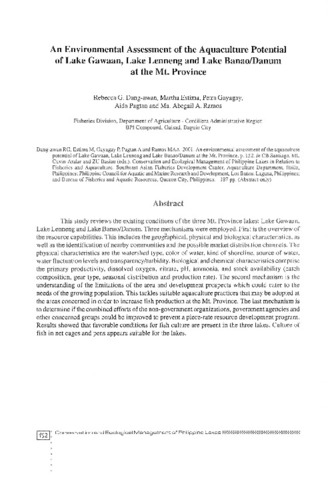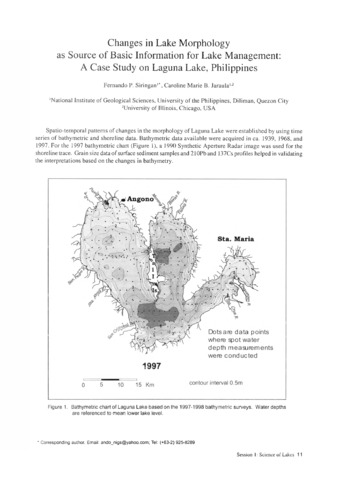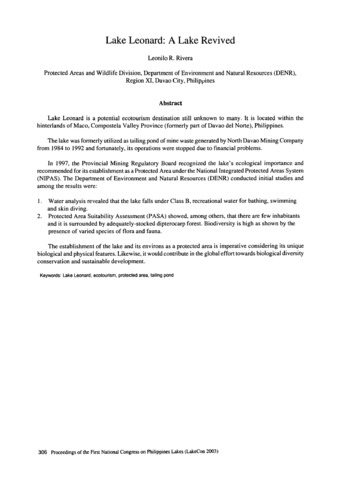Perlihatkan publikasi sederhana
Meristic and morphometric variation in the silver perch, Leiopotherapon plumbeus (Kner, 1864), from three lakes in the Philippines
| dc.contributor.author | Quilang, J. P. | |
| dc.contributor.author | Basiao, Zubaida U. | |
| dc.contributor.author | Pagulayan, R. C. | |
| dc.contributor.author | Roderos, R. R. | |
| dc.contributor.author | Barrios, E. B. | |
| dc.coverage.spatial | Bay, Laguna de | en |
| dc.coverage.spatial | Sampaloc Lake | en |
| dc.coverage.spatial | Taal, Lake | en |
| dc.date.accessioned | 2014-05-20T06:32:57Z | |
| dc.date.available | 2014-05-20T06:32:57Z | |
| dc.date.issued | 2007 | |
| dc.identifier.citation | Quilang, J. P., Basiao, Z. U., Pagulayan, R. C., Roderos, R. R., & Barrios, E. B. (2007). Meristic and morphometric variation in the silver perch, Leiopotherapon plumbeus (Kner, 1864), from three lakes in the Philippines. Journal of Applied Ichthyology, 23(5), 561-567. | en |
| dc.identifier.issn | 0175-8659 | |
| dc.identifier.uri | http://hdl.handle.net/10862/2068 | |
| dc.description.abstract | A number of researchers have applied multivariate methods to elucidate the population structure of fishes. In this study, we also used multivariate techniques to examine meristic and morphological variations in the silver perch, Leiopotherapon plumbeus (Kner, 1864), from three Philippine lakes, namely, Laguna de Bay, Sampaloc Lake, and Taal Lake. We also aimed to determine whether or not there are meristic and morphological differences among the populations of silver perch from the three lakes, considering that this fish species was introduced from Laguna de Bay into Sampaloc Lake and Taal Lake in the late 1950s and early 1970s, respectively. A total of 710 specimens from four different sites were used in the study: 155 each from Binangonan and Tanay areas of Laguna de Bay and 200 each from Sampaloc Lake and Taal Lake. Based on analysis of variance, eight meristic and 26 transformed morphometric characters were selected for subsequent analyses. Nineteen (19) principal components extracted from the 34 significant variables accounted for 82.3% of the variation in the original variables. Factor analysis using varimax rotation produced four factors: factor 1 was dominated by fin measurements while the highest loadings for factor 2 were gill raker counts. Factors 3 and 4 were dominated by various body and head measurements. Cluster analysis showed specimens from Sampaloc Lake and Taal Lake in one group, while majority of the specimens from Binangonan and Tanay are in another cluster. This suggests a closer morphological similarity between specimens from Sampaloc and Taal. Discriminant analysis gave relatively high correct classification rates (76.13–95.50%). Lower gill raker count was the most discriminating variable. Since both the silver perch from Sampaloc Lake and Taal Lake were introduced from Laguna de Bay, the observed clustering and morphological variation could be attributed to similarities and differences in the lake environments. Laguna de Bay is a shallow eutrophic lake, while Sampaloc Lake and Taal Lake are deep lakes. Further studies, however, are needed to determine which of the myriad of biological and/or physico–chemical factors might have the greatest influence on the observed morphological divergence between the source population and transplanted populations that we found in our study. | en |
| dc.description.sponsorship | This work was supported by the Southeast Asian Fisheries Development Center (SEAFDEC), Aquaculture Department, Binangonan Freshwater Station; the Department of Agriculture - Bureau of Agricultural Research (DA-BAR); University of the Philippines, Diliman, Office of the Vice Chancellor for Research and Development (UP-OVCRD), through Project Grant No. 000109 TSN; the National Research Council of the Philippines (NRCP); and, the UP Diliman, Institute of Biology. We would like also to thank Dr. Ernelea P. Cao of the UP Diliman Natural Sciences Research Institute for her comments and suggestions. | en |
| dc.language.iso | en | en |
| dc.publisher | Blackwell Publishing | en |
| dc.subject | Philippines, Laguna de Bay | en |
| dc.subject | Philippines, Sampaloc L. | en |
| dc.subject | Philippines, Taal L. | en |
| dc.title | Meristic and morphometric variation in the silver perch, Leiopotherapon plumbeus (Kner, 1864), from three lakes in the Philippines | en |
| dc.type | Article | en |
| dc.identifier.doi | 10.1111/j.1439-0426.2007.00862.x | |
| dc.citation.volume | 23 | |
| dc.citation.issue | 5 | |
| dc.citation.spage | 561 | |
| dc.citation.epage | 567 | |
| dc.citation.journalTitle | Journal of Applied Ichthyology | en |
| seafdecaqd.library.callnumber | VF SJ 0822 | |
| seafdecaqd.databank.controlnumber | 2007-34 | |
| dc.subject.asfa | body size | en |
| dc.subject.asfa | head | en |
| dc.subject.asfa | meristic counts | en |
| dc.subject.asfa | morphology | en |
| dc.subject.asfa | statistical analysis | en |
| dc.identifier.essn | 1439-0426 | |
| dc.subject.scientificName | Leiopotherapon plumbeus | en |
Files in this item
| Files | Size | Format | View |
|---|---|---|---|
|
There are no files associated with this item. |
|||
Publikasi ini ada di koleksi berikut
-
Journal Articles [1229]
These papers were contributed by Department staff to various national and international journals.



